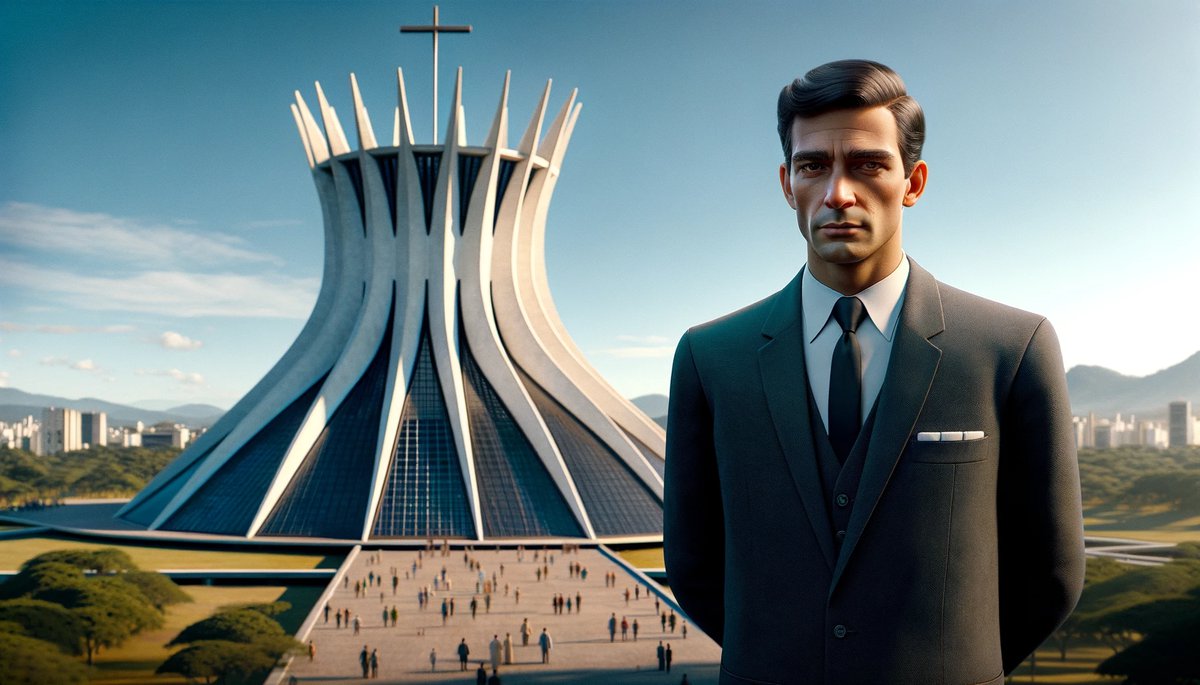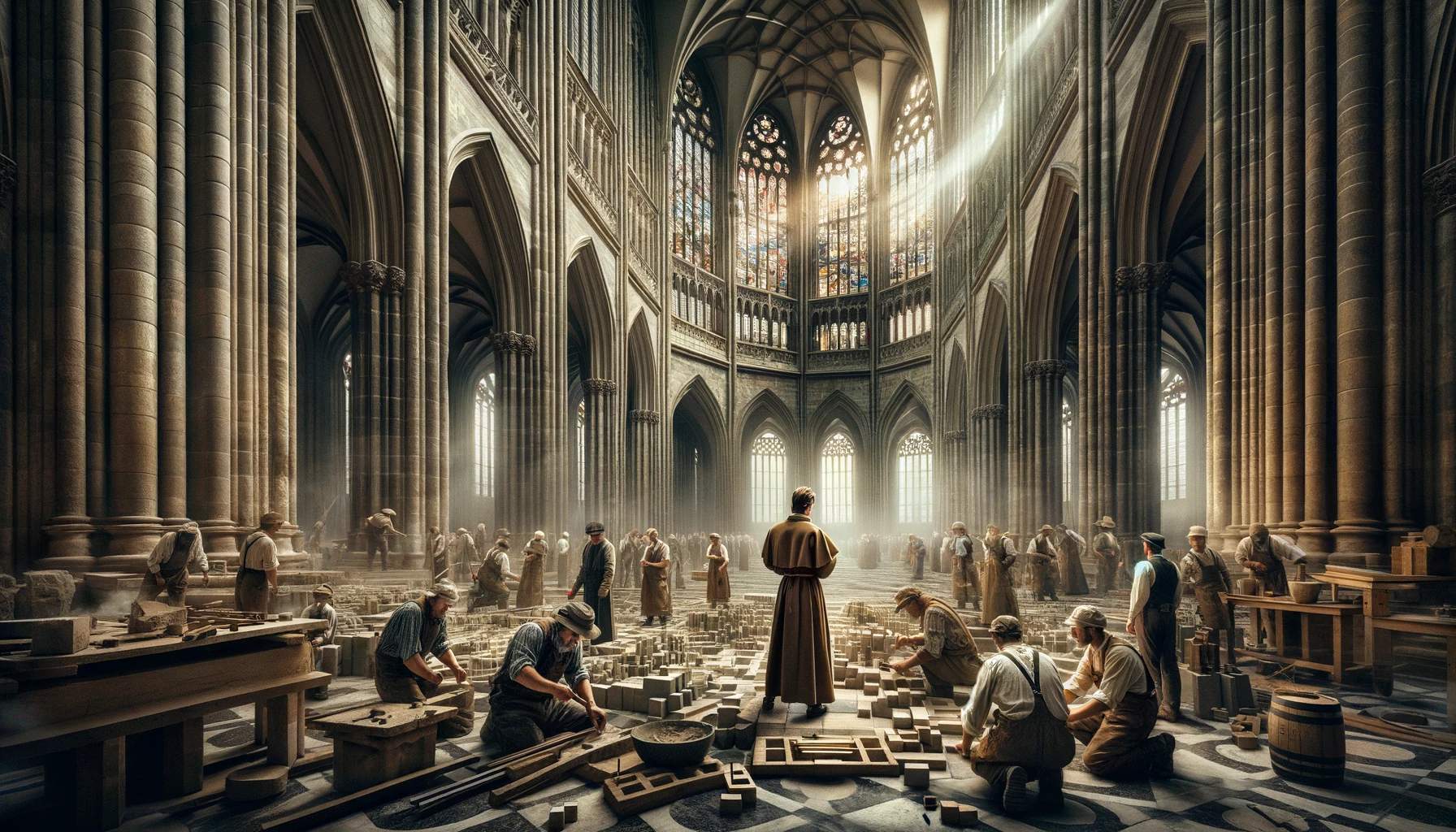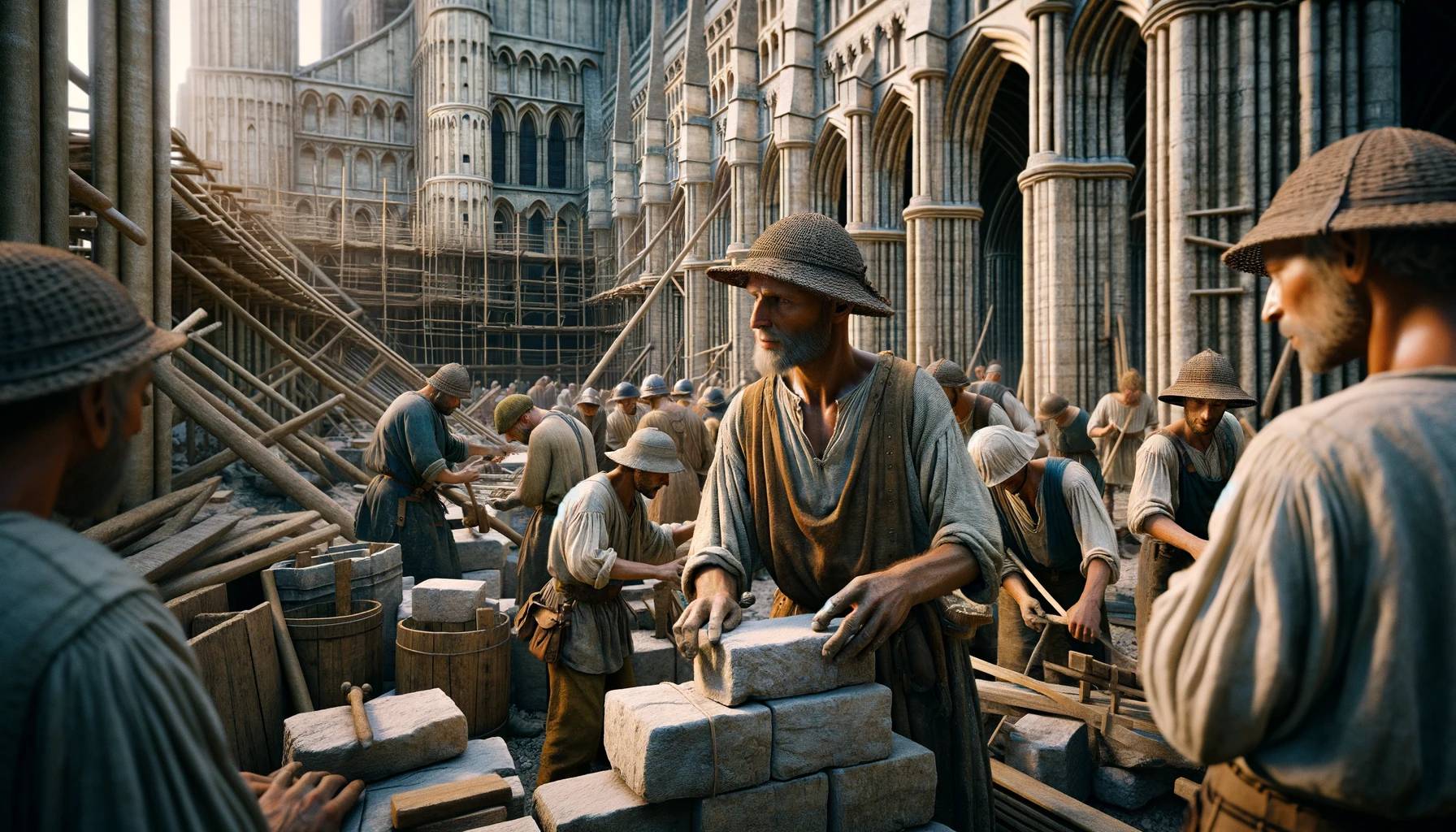Home>Arts and Culture>Who Built The Cathedral Of Brasília


Arts and Culture
Who Built The Cathedral Of Brasília
Published: February 16, 2024
Peter Smith, Editorial Director at Christian.net, combines deep insights into faith, politics, and culture to lead content creation that resonates widely. Awarded for his contributions to religious discourse, he previously headed a major organization for religious communicators, enhancing dialogue on faith's societal impacts.
Discover the architects behind the iconic Cathedral of Brasília and their impact on the city's arts and culture. Uncover the visionary minds that brought this masterpiece to life.
(Many of the links in this article redirect to a specific reviewed product. Your purchase of these products through affiliate links helps to generate commission for Christian.net, at no extra cost. Learn more)
Table of Contents
Introduction
The Cathedral of Brasília stands as a testament to human creativity and ingenuity, a striking symbol of architectural marvel nestled in the heart of Brazil. This iconic structure, also known as the Metropolitan Cathedral of Our Lady Aparecida, is a captivating fusion of modernist design and spiritual symbolism. As we embark on a journey to unravel the story behind this awe-inspiring edifice, we will delve into the visionary minds and skilled hands that brought it to life.
The Cathedral of Brasília is not merely a place of worship; it is a living embodiment of art and faith, drawing visitors from around the world to marvel at its unique beauty. From its unconventional hyperboloid shape to the mesmerizing play of light and shadow within its walls, every facet of this architectural masterpiece beckons us to explore its history and significance.
In the following sections, we will uncover the architectural vision that gave rise to Brasília, the role of the renowned architect Oscar Niemeyer in shaping the cathedral's form, and the invaluable contributions of Joaquim Cardozo in realizing its structural integrity. We will also shed light on the collaborative efforts of numerous engineers and workers who dedicated their skills and labor to bring this ambitious project to fruition. Furthermore, we will examine the profound impact of the Cathedral of Brasília on the cultural landscape of the city, leaving an indelible mark on its identity and allure.
Join us as we embark on a captivating exploration of the Cathedral of Brasília, a beacon of artistry and spirituality that continues to inspire and captivate all who behold its magnificence.
Read more: Who Built The Lincoln Cathedral
The Architectural Vision of Brasília
The architectural vision of Brasília transcends mere urban planning; it embodies a bold and ambitious dream of creating a modernist utopia. Conceived in the late 1950s, Brasília was envisioned as a manifestation of progress and innovation, a city designed to symbolize the aspirations of a burgeoning nation. The visionary behind this audacious endeavor was none other than the esteemed architect Oscar Niemeyer, in collaboration with urban planner Lúcio Costa.
Niemeyer and Costa's vision for Brasília was rooted in the principles of modernist architecture, characterized by clean lines, geometric forms, and a harmonious integration of function and aesthetics. The city was meticulously planned to reflect a futuristic ideal, with its layout resembling the shape of an airplane when viewed from above. This deliberate design was a testament to the nation's forward-looking mindset and its commitment to embracing modernity.
At the heart of this visionary cityscape stands the Cathedral of Brasília, a structure that embodies the avant-garde spirit of the era. The cathedral's unconventional hyperboloid shape, with its sweeping curves and towering columns, is a striking departure from traditional religious architecture. It serves as a powerful symbol of Brasília's architectural innovation and its departure from conventional norms.
The architectural vision of Brasília, with its emphasis on open spaces, monumental structures, and a sense of grandeur, sought to redefine the very essence of urban living. The city's layout was carefully crafted to foster a sense of community and connectivity, with designated areas for residential, commercial, and cultural activities. This holistic approach to urban design aimed to create a dynamic and cohesive environment that would inspire and uplift its inhabitants.
As we delve into the architectural vision of Brasília, we are transported to a time of boundless optimism and a fervent belief in the transformative power of design. The city's bold experiment in modernist urban planning continues to captivate and inspire, serving as a testament to the enduring legacy of visionary architects and their ability to shape the physical and cultural landscape of a nation.
In the next section, we will explore the pivotal role of Oscar Niemeyer in bringing the architectural vision of Brasília to life, particularly through his iconic design of the Cathedral of Brasília.
The Role of Oscar Niemeyer in the Construction
Oscar Niemeyer, the visionary architect behind the Cathedral of Brasília, played a pivotal role in shaping the city's architectural landscape and leaving an indelible mark on the global design community. Niemeyer's influence extended far beyond the physical structures he created; it encompassed a profound philosophy that sought to redefine the relationship between architecture, nature, and human experience.
Niemeyer's approach to design was characterized by a relentless pursuit of innovation and a deep-seated belief in the transformative power of architecture. His collaboration with Lúcio Costa in conceiving Brasília as a modernist utopia laid the groundwork for a city that would not only defy convention but also inspire a new way of living. The Cathedral of Brasília stands as a testament to Niemeyer's unwavering commitment to pushing the boundaries of architectural expression.
At the heart of Niemeyer's vision for the cathedral was a departure from traditional religious architecture. Instead of adhering to established norms, he sought to create a space that transcended conventional expectations, inviting contemplation and introspection. The cathedral's hyperboloid form, with its sweeping curves and ethereal presence, embodies Niemeyer's belief in the power of architecture to evoke emotion and elevate the human spirit.
Niemeyer's design for the cathedral was a masterful blend of form and function, where the interplay of light and shadow became an integral part of the worship experience. The striking columns that support the structure not only serve a structural purpose but also create a sense of awe and reverence, inviting visitors to immerse themselves in the cathedral's transcendent beauty.
Beyond the physical manifestation of the cathedral, Niemeyer's role extended to infusing the structure with a profound sense of symbolism. The purity of its lines and the ethereal quality of its spaces reflect his vision of architecture as a medium for spiritual expression. Through the cathedral, Niemeyer sought to create a place that transcended religious denominations, inviting all who enter to experience a profound sense of unity and serenity.
Niemeyer's enduring legacy as an architect is intrinsically tied to the Cathedral of Brasília, a testament to his ability to merge artistic vision with structural innovation. His role in the construction of the cathedral goes beyond that of a designer; it encompasses a profound commitment to shaping spaces that resonate with the human soul and stand as timeless monuments to the power of architectural imagination.
In the following sections, we will delve into the invaluable contributions of Joaquim Cardozo in realizing the structural integrity of the Cathedral of Brasília, shedding light on the collaborative efforts that brought this architectural marvel to fruition.
The Contribution of Joaquim Cardozo in the Structural Design
Joaquim Cardozo, a pioneering structural engineer, played a pivotal role in shaping the Cathedral of Brasília through his innovative approach to structural design. His collaboration with architect Oscar Niemeyer resulted in the realization of a visionary architectural concept that defied traditional norms and pushed the boundaries of engineering.
Cardozo's contribution to the cathedral's structural design was marked by a profound understanding of material properties and structural integrity. His expertise in concrete construction proved instrumental in translating Niemeyer's daring architectural vision into a tangible, awe-inspiring reality. Cardozo's innovative use of reinforced concrete allowed for the creation of sweeping, curved forms that defied conventional limitations, giving rise to the cathedral's iconic hyperboloid shape.
One of Cardozo's most remarkable achievements in the structural design of the cathedral was his ability to balance form and function, seamlessly integrating architectural expression with structural stability. The cathedral's soaring columns and expansive interior spaces stand as a testament to Cardozo's mastery in creating a harmonious union between architectural aesthetics and structural soundness.
Cardozo's meticulous attention to detail and his unwavering commitment to pushing the boundaries of structural engineering were evident in every aspect of the cathedral's construction. His innovative techniques and bold experimentation with concrete allowed for the creation of a structure that not only defied gravity but also captivated the imagination with its ethereal beauty.
Beyond his technical prowess, Cardozo's collaboration with Niemeyer exemplified a shared vision of transcending conventional architectural norms. Together, they sought to create a space that would inspire awe and introspection, inviting visitors to experience a profound sense of wonder within its hallowed walls.
The Cathedral of Brasília stands as a testament to Cardozo's enduring legacy, a monument to his pioneering spirit and his unwavering dedication to pushing the boundaries of structural design. His contribution to the cathedral's structural integrity remains a testament to the transformative power of collaboration between visionary architects and innovative engineers.
As we reflect on the profound impact of Joaquim Cardozo's contributions to the Cathedral of Brasília, we are reminded of the enduring legacy of those who dare to defy convention and push the boundaries of architectural and engineering excellence.
The Collaborative Efforts of Various Engineers and Workers
The construction of the Cathedral of Brasília was a monumental undertaking that required the collective expertise and dedication of numerous engineers and workers. From the initial planning stages to the meticulous execution of architectural and structural elements, the collaborative efforts of these individuals were instrumental in bringing the visionary design to life.
The engineers involved in the project brought a wealth of technical knowledge and innovative solutions to address the unique challenges posed by the cathedral's unconventional design. Their expertise in structural analysis, material science, and construction methodologies was essential in ensuring the integrity and stability of the cathedral's complex form. Through meticulous planning and rigorous testing, these engineers contributed to the realization of a structure that defied traditional architectural norms while upholding the highest standards of safety and durability.
In parallel, the dedicated workers who labored on the construction site played a vital role in translating architectural blueprints into tangible reality. Their skilled craftsmanship and unwavering commitment to precision were evident in every aspect of the cathedral's construction. From the intricate formwork for the sweeping curves to the precise pouring and finishing of concrete, the labor of these workers formed the foundation upon which the cathedral's ethereal beauty would stand.
The collaborative synergy between engineers and workers was a testament to the power of teamwork and shared purpose. It was through their collective efforts that the Cathedral of Brasília emerged as a transcendent symbol of human creativity and ingenuity. Each individual involved in the construction process contributed a piece of their expertise and passion, weaving together a tapestry of skill and dedication that remains etched in the very fabric of the cathedral.
The Cathedral of Brasília stands as a testament to the transformative potential of collaborative endeavors, where the convergence of visionary design, technical expertise, and skilled labor culminated in a timeless architectural masterpiece. It serves as a reminder of the profound impact that can be achieved when individuals unite in pursuit of a shared vision, leaving an enduring legacy that transcends the boundaries of time and space.
As we reflect on the collaborative efforts of the various engineers and workers who contributed to the construction of the Cathedral of Brasília, we are reminded of the remarkable achievements that can be realized through collective ingenuity and unwavering dedication.
Read more: Who Built The Cologne Cathedral
The Impact of the Cathedral on Brasília's Cultural Landscape
The Cathedral of Brasília stands as a transformative force within the cultural landscape of the city, leaving an indelible mark on its identity and allure. As a symbol of architectural innovation and spiritual expression, the cathedral has become a focal point for cultural and artistic exploration, drawing visitors from around the world to marvel at its unique beauty.
At the heart of Brasília's cultural landscape, the cathedral serves as a beacon of artistic ingenuity, inviting contemplation and introspection. Its unconventional hyperboloid shape and ethereal presence have redefined the city's skyline, becoming an iconic representation of Brasília's commitment to embracing modernity and pushing the boundaries of architectural expression.
The cathedral's influence extends beyond its physical form, permeating the cultural fabric of Brasília through its role as a gathering place for artistic and spiritual expression. Its expansive interior spaces and interplay of light and shadow create a captivating environment that inspires creativity and reflection. The cathedral has become a venue for musical performances, art exhibitions, and cultural events, fostering a vibrant and dynamic artistic community within the city.
Furthermore, the cathedral's profound symbolism transcends religious denominations, serving as a unifying symbol of peace and harmony. Its open and inclusive design welcomes visitors from all walks of life, inviting them to experience a sense of unity and serenity within its hallowed walls. As a result, the cathedral has become a symbol of cultural diversity and tolerance, reflecting Brasília's ethos as a city that embraces and celebrates its rich tapestry of traditions and beliefs.
The architectural and cultural significance of the Cathedral of Brasília has reverberated far beyond the confines of the city, garnering international acclaim and recognition. It has become a source of inspiration for artists, architects, and cultural enthusiasts worldwide, sparking a renewed interest in modernist design and its potential to shape the cultural landscape of urban environments.
In essence, the Cathedral of Brasília has left an enduring imprint on the city's cultural landscape, serving as a testament to the transformative power of architecture and its ability to inspire, unite, and elevate the human spirit. Its legacy continues to resonate through the artistic and cultural vibrancy of Brasília, solidifying its position as a timeless symbol of creativity, innovation, and inclusivity.
Conclusion
The Cathedral of Brasília stands as a testament to the harmonious convergence of visionary architecture, structural innovation, and collaborative endeavor. From its inception as a bold manifestation of modernist utopia to its enduring impact on Brasília's cultural landscape, the cathedral embodies the transformative power of human creativity and ingenuity.
At the heart of Brasília's architectural vision, the cathedral serves as a striking symbol of artistic expression and spiritual unity. Designed by the visionary architect Oscar Niemeyer and brought to life through the pioneering structural engineering of Joaquim Cardozo, the cathedral defies conventional norms, inviting visitors to immerse themselves in its transcendent beauty.
The collaborative efforts of numerous engineers and workers, each contributing their expertise and dedication, culminated in the realization of a timeless architectural masterpiece. Their collective synergy exemplifies the transformative potential of shared purpose and unwavering commitment, leaving an indelible mark on the cathedral's identity.
The impact of the Cathedral of Brasília extends far beyond its physical form, permeating the cultural fabric of the city. As a beacon of artistic ingenuity and inclusivity, the cathedral fosters a vibrant and dynamic artistic community, serving as a venue for cultural and spiritual expression. Its profound symbolism transcends religious denominations, embodying a spirit of unity and tolerance that resonates with visitors from around the world.
In essence, the Cathedral of Brasília stands as a testament to the enduring legacy of visionary architecture and collaborative endeavor. Its ethereal beauty and cultural significance continue to inspire and captivate, solidifying its position as a timeless symbol of creativity, innovation, and inclusivity within the architectural and cultural landscape of Brasília and beyond.














